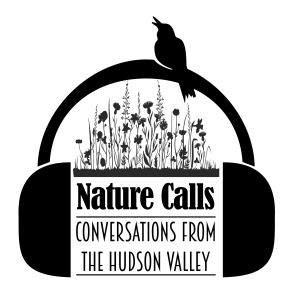
Nature Calls: Conversations from the Hudson Valley
Leisure:Home & Garden

Weeds are a constant fact of a gardener’s life. As our guest, Toni DiTommaso, says we can count on three things in life: death, taxes, and weeds.
But if it weren’t for weeds, the world would have less topsoil than it has now, and humanity might have suffered mass starvation by now. Why? Because the plants we call weeds do a vital job in ecosystems: they quickly establish in, protect, and restore soil that has been left exposed by natural and human-caused disturbances. That said, weeds, in addition to being a nuisance, cause more yield loss worldwide and add more to farms’ production costs than insect pests, crop pathogens, root-feeding nematodes, or warm-blooded pests (rodents, birds, deer, etc.).
So perhaps, we should start this discussion with a definition. What exactly is a ‘weed’? The Oxford Dictionary defines a weed as a wild plant growing where it is not wanted and in competition with cultivated plants. Similarly, the Miriam-Webster dictionary describes it as a plant that is not valued where it is growing and is usually of vigorous growth. Penn State Extension tells us that weeds compete with other plants for nutrients, water, and light, as well as potentially harbor diseases and pests. Simply put, a weed is a plant ‘out of place’.
Plants that are characterized as weeds can reproduce via seeds, rhizomes, cuttings or runners. Their seeds are typically plentiful and tiny which can disperse easily and/or remain dormant for many years. They also can grow in less-than-ideal environments, soils, and conditions. As any gardener knows, they tend to grow fast and can outcompete other plants. Weed management can also be frustrating as some of these plants can break off and re-sprout or self-pollinate if pulled out. The best place to begin is to learn how to identify weeds.
In this episode, we are fortunate to hear from Antonio (Toni) DiTommaso, Professor and Section Head, School of Integrative Plant Science Soil and Crop Sciences Section at Cornell University’s College of Agriculture and Life Sciences (CALS). The focus of his research is to gain a more in depth understanding of the basic biological and ecological principles governing weeds to find safe, effective, sustainable and economically viable weed management strategies.
In addition to his teaching and research duties, he is also a co-author of the book, Weeds of the Northeast.The fully updated second edition provides detailed illustrations for easy identification of more than 500 common and economically important weeds in the Northeast including New York.A practical guide, it includes a dichotomous key as well as descriptions and photos of floral and vegetative characteristics, giving anyone who works with plants the ability to identify weeds before they flower. Comparison tables make it easy to differentiate between many closely related and similar species.
Listen to this episode of Nature Calls: Conversations from the Hudson Valley, to learn more about Toni DiTommaso and weeds.This will be of interest to home gardeners, landscape managers, as well as pest management specialists.
Hosts: Tim Kennelty and Jean Thomas
Guest: Antonio DiTommaso
Photo by: Cornell University CALS
Production Support: Linda Aydlett, Deven Connelly, Teresa Golden, Xandra Powers, Annie Scibienski
ResourcesMore Episodes
 2022-12-08
2022-12-08
 2022-12-01
2022-12-01
 2022-11-17
2022-11-17
 2022-11-10
2022-11-10
 2022-10-27
2022-10-27
 2022-10-20
2022-10-20
 2022-10-06
2022-10-06
 2022-09-22
2022-09-22
 2022-09-15
2022-09-15
 2022-09-08
2022-09-08
 2022-08-25
2022-08-25
 2022-08-04
2022-08-04
Create your
podcast in
minutes
- Full-featured podcast site
- Unlimited storage and bandwidth
- Comprehensive podcast stats
- Distribute to Apple Podcasts, Spotify, and more
- Make money with your podcast
It is Free
- Privacy Policy
- Cookie Policy
- Terms of Use
- Consent Preferences
- Copyright © 2015-2024 Podbean.com





